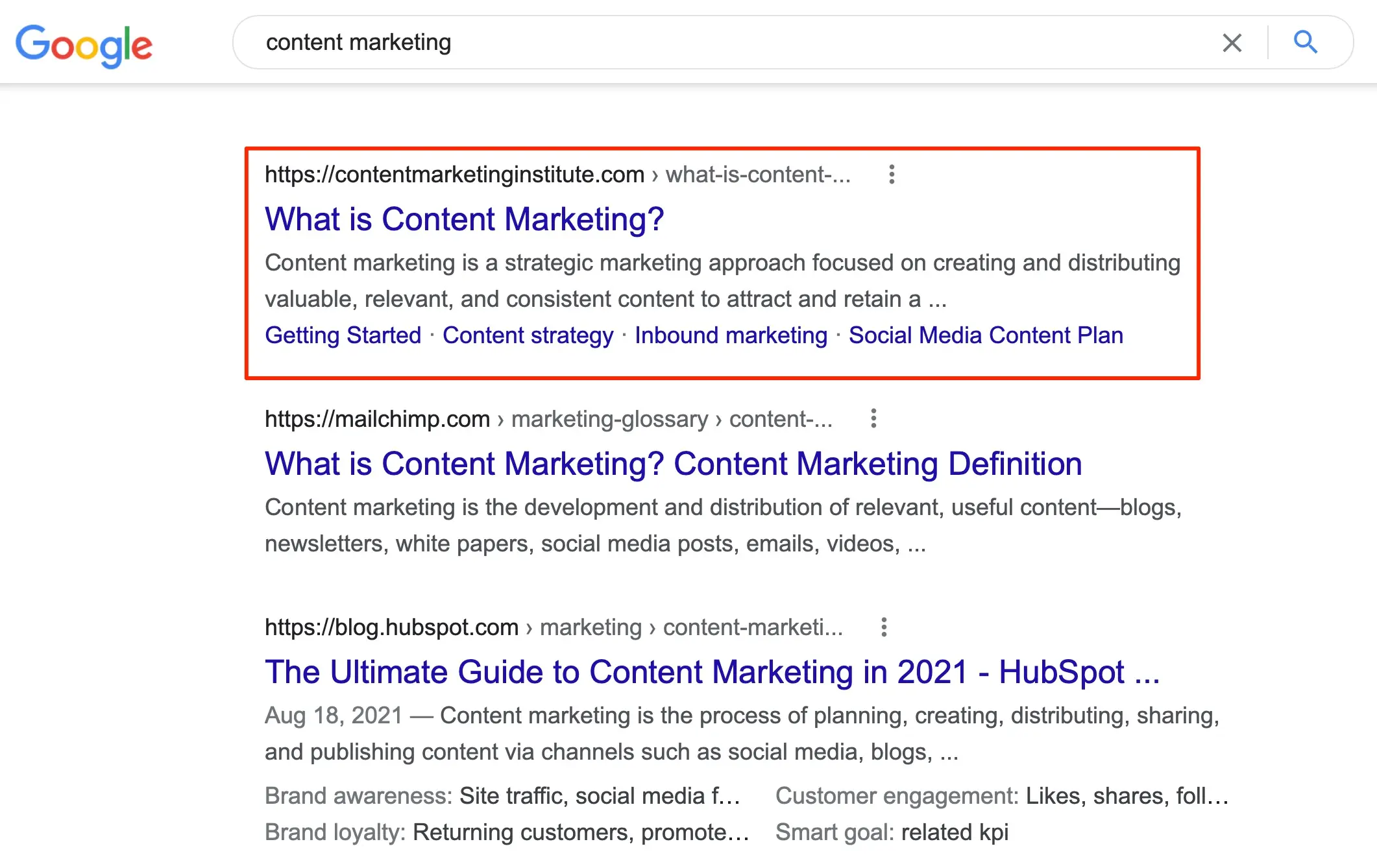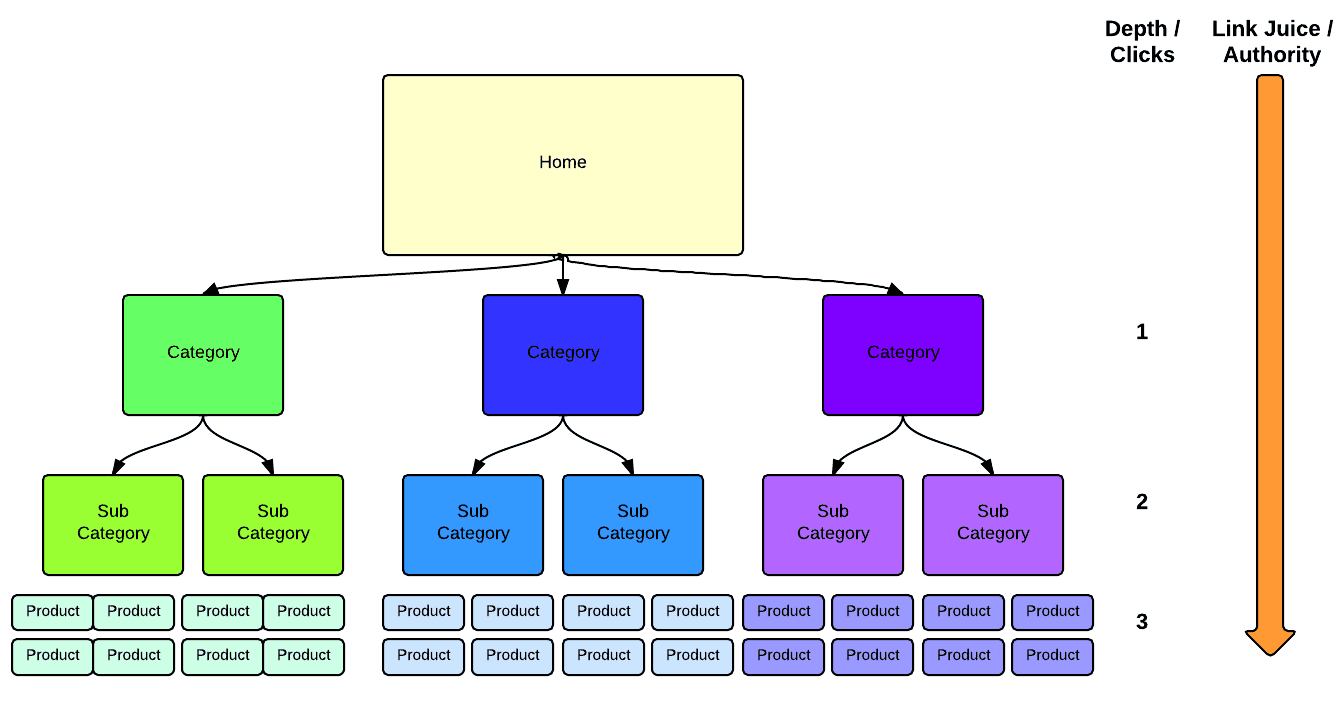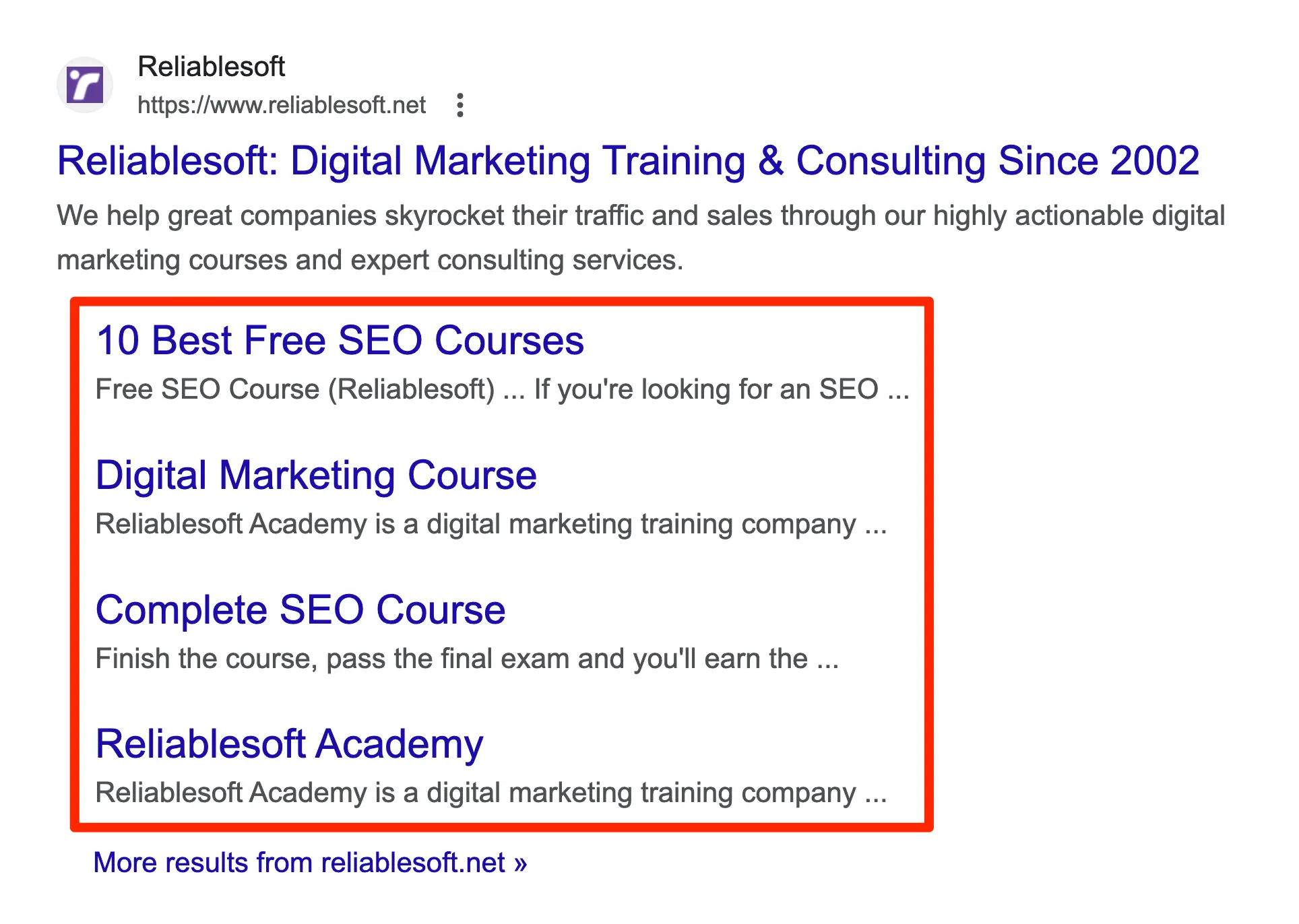Homepage SEO is important for all websites. Whether you have a blog, corporate website, or eCommerce store, you need to SEO your homepage, even if this is not one of the pages you expect to get high rankings.
Why You Should SEO Optimize Your Homepage?
You should pay attention to your website’s homepage SEO for many reasons.
In many cases, it is the first page users see (especially for corporate websites), and it is one of the pages users will visit, even if they land on any other pages of your website.
They will visit your homepage to learn more about your blog or business.
SEO wise it is very important since it is a perfect opportunity to give Google a big hint (through your title, description, and content), on what the website is all about.
Google will use this information to create your website’s entry in the SERPs when people search for your domain or business name.
Your search snippet needs to be accurate, appealing, and professional.
In some cases, the homepage is also a candidate to rank in the top positions for highly competitive keywords because it ‘absorbs’ all the power and page rank from the rest of the pages.
Consider the following examples:
Contentmarketinginstitute.com homepage ranks for ‘content marketing’ because the website has many articles related to content marketing.

Optimizing your homepage involves several steps. It’s not only a matter of technical SEO; as we will see below, other elements must also be present in order to have a highly optimized homepage.
Don’t forget that SEO is not just for search engines. It’s primarily for users and usability. From an SEO perspective, the optimization of a homepage is no different than doing SEO on other pages of your website.
If you want to skip the theory, you can go directly to the homepage SEO Checklist. In addition to the SEO factors, you should also consider other essential elements of an SEO optimized homepage.
One of the best and fastest ways to learn how to fully optimize your homepage is to follow a good SEO course. A high-quality course will help you understand homepage SEO without spending endless hours searching for this information from random resources on Google.
Get Started
Homepage SEO Best Practices
Follow these homepage SEO tips to optimize your homepage:
- Optimize the Homepage Title
- Optimize the Homepage Meta Description
- Optimize the H1 tag
- Homepage image SEO
- Optimize Your logo
- Add Proper Structured Data Markup
- Homepage Content SEO
- Optimize homepage loading speed
- Check Mobile Friendliness
- Add an SSL
- Revise your Site Structure and Navigation
1. Optimize the Homepage Title
Don’t just use your business or website name as the homepage title but try to be more creative by giving users and search engines more information about your website’s primary focus.
Utilize all 60 characters at your disposal to blend keywords and business information in one sentence.
Let’s look at a couple of SEO-optimized homepage title examples:
The first one is coming directly from Google and, in particular, the Google Ads homepage.
Notice how they use their target keywords, PPC Online Advertising, in the page title.

Here is another example from MOZ.
One of their main keywords, SEO Software is placed right after their business name.

Homepage title SEO rules:
- Keep the title up to 60 characters.
- Don’t just use your brand name, but include keywords that represent your business or website.
- Ensure your target keywords are placed at the beginning of the title.
- Don’t confuse Google by adding too many keywords in the title. Add the keywords that you want to be known for.
- No keyword stuffing, for example, don’t do this “Digital Marketing | SEO | Social Media | Links”, but do this “Low-Cost Digital Marketing Services by [Your website name]”
- Add your domain or business name at the beginning of the title
2. Create an Engaging Homepage Meta Description
The homepage description is also very important.
As noted above, the description is what users will see in the SERPS, so you may want to give it a bit of thought.
Look at the example below from Google AdSense to get some nice ideas.

Remember that Google may choose not to show your description but use their own.
This may happen if your description is too short (i.e., less than 130 characters), too long, i.e. (more than 154 characters), or if it includes a lot of keywords.
Read the guide below for step-by-step instructions on how to optimize your meta descriptions based on data from the Google search console.
3. Optimize the H1 tag
The next thing to optimize is the H1 tag.

Each page of your website (including the homepage) needs to have one (and only one) H1 tag.
The H1 tag is usually at the top of the page, and most themes are configured to display the page title enclosed in h1 tags.
If you have a choice for setting the H1 tag for the homepage, ensure that you also include some related keywords.
How to check your homepage H1 tag
Open your homepage in the browser, right-click anywhere on the page, and select VIEW SOURCE.
Press CTRL –F (to search for a phrase) and search for “h1”.
Normally, you should see only one opening <h1> tag and one closing </h1>.
If you notice that more than one set is active in your HTML code, you can hire a developer to remove them and leave only one.
4. Homepage Image SEO
A good homepage needs images. They make a page less boring and the message you want to convey to your readers more obvious.
In terms of SEO, images can be used to give another signal to the search engine crawlers about your content.
When using images for your homepage, make sure that:
- You set an ALT text that describes the image
- Include in your ALT text keywords in a natural way
- When an image includes text, try to separate the image part from the text. Search engines cannot read text embedded in a JPG or PNG.
- For maximum SEO, keep the image without the text and add the text using CSS and HTML.
5. Optimize Your logo
Every website needs to have a unique logo. What you can do to optimize your logo is 2 easy things:
- Make sure that the image filename includes your website's name. For example, my logo has the filename ‘reliablesoftnet-logo.png’.
- The ALT text includes your website name, i.e., ‘Reliablesoft.Net Logo’.
6. Add Proper Structured Data Markup
Structured data has gained importance in the last couple of years, and although it is not yet part of the Google ranking algorithm, it will soon be included.
What is structured data markup?
Simply put, structured data is a way to describe your data to search engine crawlers.
All major search engines have agreed to a common structure for presenting various forms of data (e.g., articles, products, organizations, companies, events, etc.), and your job as a webmaster is to add the necessary ‘tags’ to your HTML code.
Google may use structured data in the SERPS (in the form of rich snippets or knowledge graph entries), which makes your entries more appealing to users and means higher CTR (click-through rates).
When it comes to structured data for the homepage, you need to ensure that you define the following schemas:
- Organization (if you are an online business)
- Local Business (if you have a physical presence i.e., a shop)
- Person (if you are running a personal blog).
7. Homepage Content SEO
A homepage needs to have content, and by this, I mean text content that search engines can read and understand.
In general, a homepage can have 3 variations:
- Corporate websites usually have details about the company, images, and links to the internal pages.
- In the case of eCommerce stores, the homepage may show the latest products, offers, latest news, and links to the different product sections.
- The homepage of portals or blogs typically displays the latest blog posts and featured articles.
Regardless of the homepage style you choose, you need to ensure that there is enough text content on the page.
Avoid having only images or videos without text.
Make sure that your content includes your target keywords or variations.
Take a look at my homepage again and notice how keywords, content, and internal links blend together.
8. Improve loading speed
It is a fact that 40% of users will leave a page if it takes more than 3 seconds to load.
This means that even if you have the perfect homepage, you will lose visits and customers if it is too slow to load.
Here are a few things to consider to make your homepage load faster:
- Use a fast server from a reliable host. If you are still on shared hosting, you should definitely consider moving to a VPS. Having your own server plays a big role in website speed, and considering that the cost for a VPS is as low as $25 per month, there is no excuse for serious businesses or bloggers.
- Optimize your image file size: Before uploading an image to your website, use photo editing software (Gimp, Photoshop, Pixelmator, etc.) and export the images optimized for the web. If you use many images, you can also consider using a CDN.
- Check your website using Page Speed Insights. This is a tool by Google that gives recommendations on how to improve your page speed.
- Use Google Lighthouse. Lighthouse is a tool for analyzing a webpage's performance in various areas, including page speed.
- If you use video on the homepage, make sure that it is hosted on a video streaming service like YouTube and embedded in your website. Don’t host the video on your website because this will increase your loading time, bandwidth, and required server resources.
- Keep your software up-to-date. All CMS platforms are always trying to improve speed and performance, so keep your software up-to-date to take advantage of this.

9. Check Mobile Friendliness
More than 60% of Google searches are from mobile devices, so a mobile-friendly homepage is essential.
With the introduction of the mobile-first index, Google uses a slightly different ranking algorithm for mobile websites, but the basic SEO configurations (titles, descriptions, h1, etc.) are the same for both desktop and mobile.
Also, you need to ensure that your mobile homepage has the same content as your desktop homepage. You don’t want to confuse Google by giving them mixed signals.
Generally, it is best to use a responsive website design so that any SEO fixes you do for the desktop are immediately available for mobile.
10. Add an SSL
A homepage (and website as a whole) must be HTTPS.
If you have an eCommerce store or collect user information, this is a must, but even in cases where you have a normal blog, it is good to have SSL enabled.
Google has mentioned many times that, for now, having an SSL website gives you a small comparative advantage, but this will certainly become more important in the coming months or years.
When migrating from HTTP to HTTPS, make sure that:
- You make 301 redirections to redirect HTTP URLs to HTTPS
- Use 2048-bit key certificates
- You register and keep active all 4 versions of your website in webmaster tools (http://www, https://www, HTTP://, HTTPS://)
11. Site Structure and Navigation
Navigation
Navigation is an important usability element. You need to ensure that all your website's important pages can be accessed from your menu with no more than three clicks.
Avoid having nested menu elements that go beyond 3 levels, and also consider having the menu ‘always on top’ when the user navigates further down the page. (see how the menu of this website stays on top while you scroll down).
A clear menu structure will also help reduce your bounce rate and encourage users to visit more than one page on your website.
Site Structure

Your website should have a hierarchical structure. The homepage should be the focal point, and all other pages should be grouped into categories based on their type.
Your hierarchy should be no more than 2 or 3 levels deep. Don’t overcomplicate your site hierarchy; keep it simple. All pages of your website must be accessible from the homepage in less than 3 clicks.
Don’t forget that the way search engines work is to visit the homepage and then follow any links to discover the rest of the pages.
This means that your homepage should link to ALL important pages, including sales pages and any blog posts you want to promote more than others.
Optimize for Site Links
A well-structured homepage can get you sitelinks in Google Search. Sitelinks are typically shown for domain name searches.
For example, if you search Google for reliablesoft.net, you will see the following snippet with sitelinks.

The only way to influence what appears as a site link is through your site structure and navigation. Consider what you want users to see when searching for your business name and adjust your homepage sections accordingly.
Other Essential Elements of a Highly Optimized Homepage
Besides the above elements that are related to homepage SEO, a highly optimized homepage should also have the following elements:
Clear Call to Action (CTA)
For any type of website, the homepage needs to have a clear purpose.
If you are selling products, then the main purpose will be to redirect users to your product pages.
if you are selling services to your services page and, in cases of blogs, to your articles.
Have a look at my homepage and notice that the ‘call to action' is one of the elements the users see when they land on the page.
Establish Trust
When a user visits your homepage, you have 3 seconds to grab their attention and gain their trust.
Social proof, customer testimonials, achievements or partnerships, and success case studies are all elements that can help in this direction.
Don’t assume that users will navigate your website in detail to find out more about you but make sure that you give them everything they need to know on the homepage.
Homepage SEO Checklist
Here is the complete homepage SEO checklist.
- Optimize the Homepage Title
- Keep title length close to 60 characters
- Add your domain name in the beginning
- Include your target keywords
- Optimize the Homepage Meta Description
- Make it interesting
- Encourage users to visit your website
- Optimize the H1 tag
- Make sure that there is only one h1 tag on your homepage
- Include your target keywords or related keywords in the h1 tag and other headings
- Homepage image SEO
- Make sure that all images have an ALT text
- Optimize the filename of all images
- Compress images to load fast
- Optimize Your logo
- Include your business name in the logo filename and ALT text
- Add Proper Structured Data Markup to your Homepage
- Content SEO
- Make sure that your homepage has text content
- Use text content for links
- Make sure to include your target keywords and variations in the homepage content
- Optimize homepage loading speed
- Consider moving to a VPS
- Keep your software up-to-date
- Use Google Lighthouse to analyze your speed
- Use a streaming service for Video
- Make sure that your homepage is mobile-friendly
- Make sure that your homepage has all the content of the desktop homepage
- Make sure that the homepage has an SSL installed
- Site Structure and Navigation
- Make sure that all important pages are linked from the homepage
- Make sure that users can access any page in less than 3 clicks starting from your homepage.
- Review sitelinks shown in Google search and adjust your navigation and homepage structure accordingly.
- CTA and Trust
- Add clear CTA links (Call to Action) to help users find your product or services pages
- Add elements to establish trust with users (testimonials, reviews, etc.)
Conclusion
Homepage SEO is important for all kinds of websites. The homepage is the ‘front door’ of your business (or blog) and should have a clear structure, load fast, and give users options and details about your website’s purpose.



